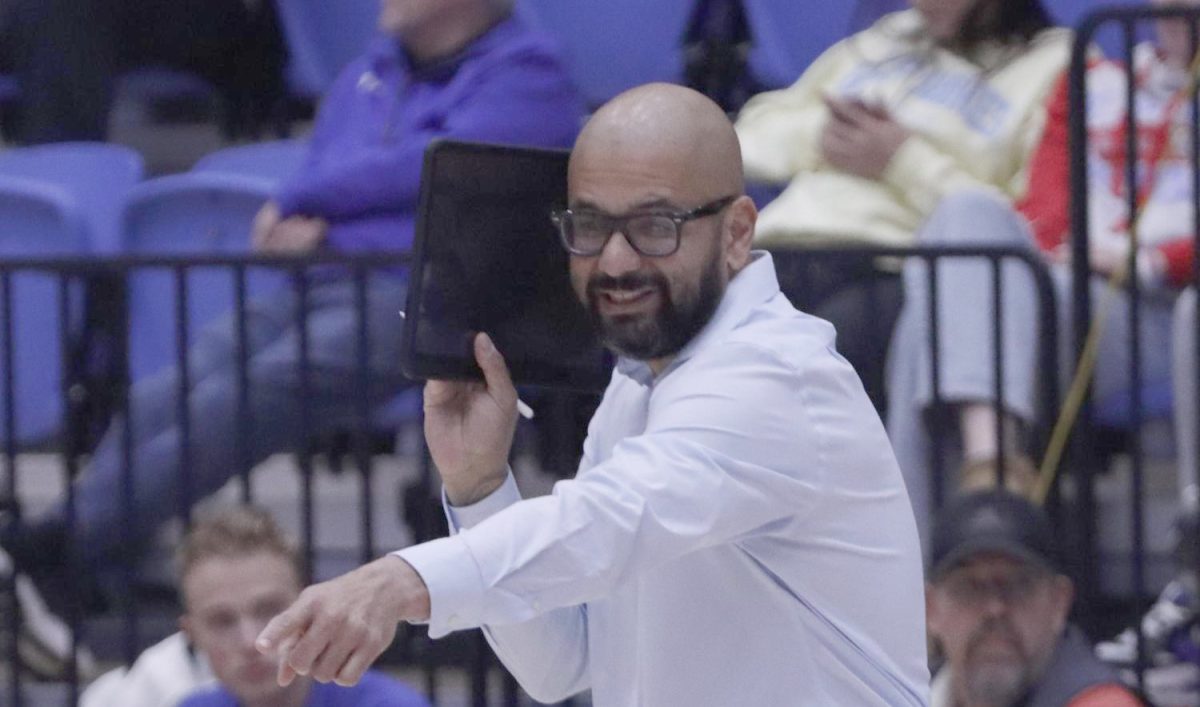Photographer discusses cultural issues for indigenous people through photographs
February 27, 2018
When photographer Alexandra McNichols-Torroledo began hearing about forced displacement in her home country of Colombia in 2011, she knew that she had to take action. Since then, she has centered much of her work around exploring the forced displacement of the Emebera-Wounaan indigenous people by leftist guerilla groups. Many were displaced through tactics such as abduction and murder.
McNichols-Torroledo discussed her work at the lecture “Cultural Survival and Land Dispossession” Monday night in the Buzzard Auditorium.
McNichols-Torroledo emigrated from Colombia when she was 21.
She said in her time living in Colombia, she’d never imagined this kind of displacement happening. Colombia has one of the highest portions of displaced people, at 7.3 million.
McNichols-Torroledo recalled almost dying when exploring a land mine in the Colombian jungle.
She displayed images of emaciated children, plagued by illness and contamination.
McNichols-Torroledo saw many families in search of shelter with no possessions, not even shoes. There were times when she witnessed children being exposed to evils such as prostitution.
Despite all this, McNichols-Torroledo noted that in one picture she showed the audience, the children are jumping.
“As a photographer, even in the worst circumstances, beauty can be found,” she said.
McNichols-Torroledo also likes to document the traditional culture of Colombians, showing the audience in Buzzard photographs of a shaman ritual, with involves attempting to summon spirits with fire. She said that it is important to her to show that Colombians are still practicing their traditional lifestyles despite their displacement.
In America, McNichols-Torroledo worked to document the Standing Rock Sioux Tribe Reservation’s protests against the Dakota Access Pipeline.
McNichols-Torroledo did this after being awarded a grant by The Indiana Arts Commission, which she wanted to use to photograph Native people in the United States.
“I love seeing indigenous people fighting for their rights in America,” she said.
Her Standing Rock coverage features images of reservation members protesting, camping out in teepees that are clustered together and protesters being arrested.
“We have to change the concept of civilization. The cost that other people are paying is high because we’re destroying Mother Nature,” said McNichols-Torroledo in response to what she saw at Standing Rock.
Regarding photography, McNichols-Torroledo said that she owns two digital and three analog cameras. She said when she first started developing her interest in photography, she could not afford to buy one of her own. She later purchased her first camera when she was 20. McNichols-Torroledo said she uses all of the cameras that are made available to her besides cellphones, but her favorite is her Nikon D7200. She said she loves older cameras and advises aspiring photographers to use all of the resources that are made available to them. “It’s not the camera that’s important,” she said. “It’s the eye of the photographer. “
McNichols-Torroledo has degrees from Indiana University, where she obtained a Master of Fine Arts at the Universidad Externado in Bogota, Columbia. She has covered cultural issues in the United States, Colombia and The Dominican Republic.
She has also published four books on photography, “Stone Faces,” “Diaries of Death,” “Dreams and Nightmares” and “Encounters.”
“I learned a lot about indigenous culture. This gave me an inside look into their problems,” said Tristan Gouchenour, a sophomore music education major.
Alex Woolley, a junior studio art major, said the lecture was an eye-opening experience.
“These photos are more than just performance art. You can entertain an idea that’s not usually used, and details can be expressed more accurately,” Woolley said. “You can also get more insight into people’s views and conditions through photography.”
Olivia Swenson-Hultz can be reached at 581-2812 or omswensonhultz@eiu.edu.



















![[Thumbnail Edition] Senior Foward Macy McGlone, getsw the ball and gets the point during the first half of the game aginst Western Illinois University,, Eastern Illinois University Lost to Western Illinois University Thursday March 6 20205, 78-75 EIU lost making it the end of their season](https://www.dailyeasternnews.com/wp-content/uploads/2025/03/WBB_OVC_03_O-1-e1743361637111-1200x614.jpg)
















































